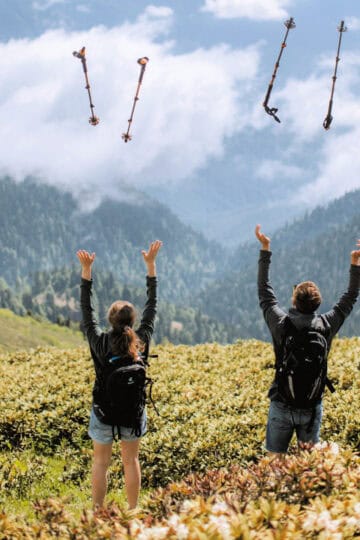Hiking allows you to explore the beauty of various destinations. There has been an upward trend in hiking participation, with approximately 49.69 million participants hiking in the U.S. in 2019.
Due to the growing popularity of hiking trips, many natural resources might be at risk. However, you can take some time to be mindful of the environment and plan a sustainable trip. Here are some tips to help you enjoy your hiking adventure as you protect the environment.
Protecting the Environment on Your Hiking Adventures
Wear Ethical Shoes
Shoes are a significant component of your hiking trip as they provide you with the stability and comfort you need while walking. However, many shoes are not eco-friendly due to the material used in their production. To ensure sustainability, try GroundedPeople's vegan shoes and take a step towards a cleaner environment.
Vegan shoes are created with recycled materials, so they don't use any animal skin or animal-based glue during production. Shoes created by big brands also harm the environment and contribute to global warming, so wearing ethical shoes will allow you to reduce your carbon footprint on the earth.
Bring Reusable Water Bottles
Plastic stays in the environment for a long time and contributes to global warming. The high amount of plastic pollution in the air, land, and seas negatively affects the environment and its inhabitants. About 8 million tons of plastic waste enter the world's ocean every year, making it a prevalent global problem.

Although plastic pollution is a significant concern, it’s not too late to become a part of the solution. You can reduce plastic waste by bringing reusable water bottles to your hiking trip. A plastic bottle will ensure that you don't contribute to the plastic pollution problem. A reusable bottle will also help your water maintain its temperature, which can be helpful during a hike.
Don't Go Off the Trail
It is essential not to disrupt the environment when you hike. Stay on the dedicated trails to avoid harming the natural habitat. Look out for signs, footsteps, or barriers, or use a map that guide the way during your hike. It might seem tempting to go off the trail when you spot something interesting, but if you want to respect the environment, stay on the trails.
Staying on the path will also ensure that you don't get lost in the wild. You may find it challenging to find your way back, especially if it's dark when you go off the trail. You could also carry trekking poles with you to have more stability during your hike.
Take Your Garbage with You
Littering on your hiking trip is disrespectful and harmful to local wildlife. You will also ruin the experience for future hikers who will pass the trail filled with garbage. Bring a reusable trash bag with you and store all your garbage in one place. Throw the garbage in a dedicated bin to ensure you're not harming the environment or wildlife.
Protecting the environment during a hiking trip isn't a challenging task. Take time to plan your trip and enjoy the beauty of nature without disturbing its peace.





Leave a Reply